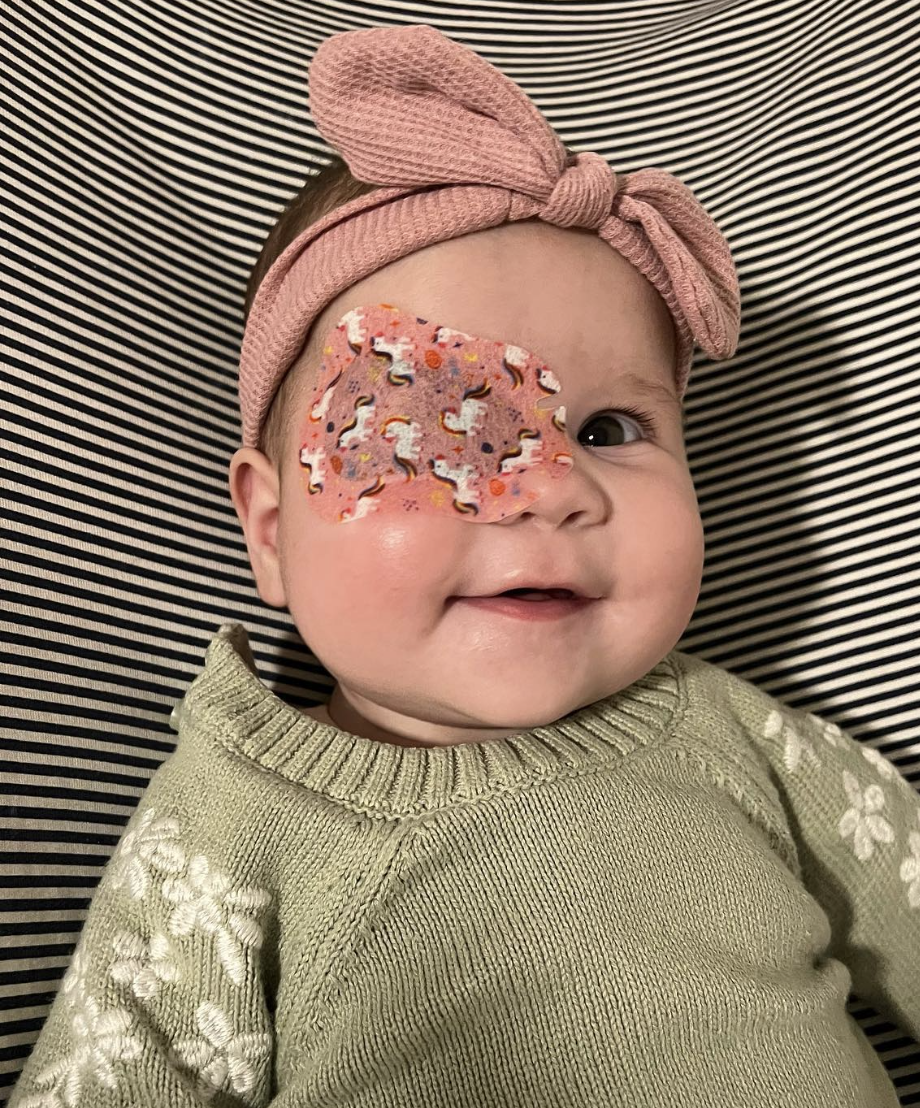Let's Talk About Strabismus
Strabismus is one of the most common causes of amblyopia and affects roughly 5% of Australians, so we thought we'd share some insights into the condition's causes, signs, symptoms and treatment options 👀
What is Strabismus?
Strabismus is a condition in which the eyes don’t point in the same direction at the same time. In cases of strabismus, one or both eyes may turn inward (esotropia), outward (exotropia), upward (hypertropia), or downward (hypotropia), either sometimes (intermittent) or all of the time.
To avoid seeing double, the brain may ignore the image from the eye that is not focused on the object, and this prevents that eye from developing properly, leading to Amblyopia. You may have heard this condition referred to as lazy eye because of the reduced vision in one eye, but here at Speckles, we prefer to call it the “curious eye”.
Strabismus usually develops by the age of 3, however, the condition can arise in older children and adults. You may have heard that children will outgrow strabismus however, this is a myth. Without proper treatment while the eye is still developing, such as occlusion therapy (patching) or surgery, strabismus will worsen over time, resulting in a permanent vision loss.
What Causes Strabismus?
There are six muscles attached to each of our eyes that receive signals from the brain, directing how they move. In cases of Strabismus, one or both eyes have poor eye muscle control, causing them to turn in, out, up or down, especially when the child is tired. This can be caused by genetic conditions, injury, a significant refractive error such as farsightedness or medical conditions such as Cerebral Palsy or Down Syndrome.
For example, in children who are farsighted, the eyes must work extra hard to focus on distant images, which may result in accommodative esotropia (the eyes turning inward).
What are the Signs and Symptoms of Strabismus?
As strabismus develops at such a young age, your child may not realise there is an issue with their vision, as to them, this is normal. To ensure cases of strabismus don't worsen, you should be on the lookout for
- Misalignment in your child's eyes.
- Your child's eyes not moving at the same pace or in the same direction when looking at an object.
- Your child frequently blinks, squints or tilts their head when trying to see.
- Your child complains of regular headaches or feeling constantly tired due to the eyes working harder to see


Speckles Superstar Hazel Milan, who is 6 months old and patching to treat Strabismus in her left eye.
Check out this blog to learn more about the signs your child may need an eye test!
How is Strabismus Diagnosed?
To diagnose strabismus, an optometrist will conduct a series of eye exams to test how your child's eyes move and focus on objects and ask questions about your family's medical history. This includes a visual acuity test where your child will be asked to read letters and numbers, both close up and at a distance. You've probably undergone a visual acuity test when getting your eyes tested or renewing your license.
If your child is too young to read or to corroborate findings from the visual acuity test, your eye specialist may also perform a refraction test using a phoropter and a retinoscope that measures how the eyes focus light. Your specialist will also assess how the eyes move and work together, determining whether one eye is working harder than the other to obtain a clear image.
To ensure the strabismus is not caused by another eye disease, your specialist will also run tests on the internal and external structure of the eye. Once they have accumulated information from all of these tests, your eye specialist can provide a diagnosis and propose treatment options for your child.
How is Strabismus Treated?
There are a number of treatment options for strabismus, including:
- Wearing eyeglasses or contact lenses (usually changed weekly) to assist the eyes in focusing on close-up or distant objects
- Wearing prism lenses, which are similar to contact lenses, but are thicker on one side to alter how light enters the turned eye. This can reduce or eliminate how much the eye must turn to process images clearly.
- Your specialist may recommend various vision therapies designed to improve eye coordination and strength. This can include a program of activities that reinforce the eye-brain connection and may be completed while patching the stronger eye, allowing the "curious eye" to strengthen and correct itself.
- Depending on the severity of the strabismus, your child may need to undergo surgery to change the length and position of the muscles around the eyes. Following this surgery, your child will also have to undergo the vision therapies mentioned above, preventing the eyes from becoming misaligned again.
What should I do if I think my child has Strabismus?
If you notice any of the signs or symptoms of strabismus mentioned above, you should immediately schedule a consultation with an eye care professional such as an optometrist, orthoptist or ophthalmologist. These professionals will perform diagnostic screenings to assess whether your child has the condition and can put actions in place to prevent the condition from worsening and causing Amblyopia.
Remember, your child's eyes play an integral role in their development and ability to learn, so planning regular trips to the optometrist as well as other health care professionals is crucial. You can learn more about when you should get your child's eyes tested here.



